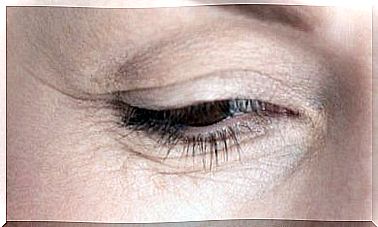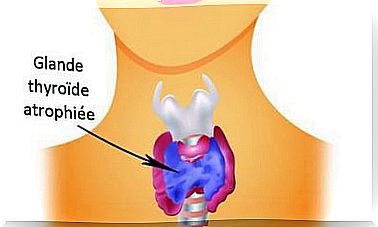Vegetations Or Adenoids: What Are They?
The adenoids or adenoids are a part of the immune system of the human body. Although they are often the cause of a surgical operation, their primary function is precisely to prevent people from falling ill. In this article, we explain their usefulness.

The correct term would be adenoids, but we know them by the colloquial name of adenoids. They are part of the human immune system. In other words, they fulfill defense functions of the organism against possible microorganisms or substances that could penetrate from the outside.
This immune tissue is located behind the nose, in what you might call the roof of the airways, before it begins to descend to the chest through the neck. Together with the tonsils, they form a ring that separates the area of the oral and nasal cavities from the pharynx itself.
The main function of adenoids is to filter and retain exogenous substances or microorganisms that try to enter the human body, at the risk of making it sick. Adenoids can trap bacteria, viruses, or even dust that contains pathogens.
On the other hand, adenoids or adenoids have their greatest activity in childhood. Until the age of five, their function is clearly active. From then on, they begin to reduce their size and tend to disappear during adolescence. Indeed, the human body later has other more effective means of defense.
Hypertrophy of the adenoids
As we have already specified, the “popularity” of adenoids or adenoids comes from the need to operate on them in certain cases. The condition that results in the need for surgery is hypertrophy.
Hypertrophy of adenoids is the increase in the size of the immune tissue found there. This generates unwanted symptoms in the person and prevents them from performing the specific function for which the adenoids exist. The most common age of presentation is between three and six years.
Children who have it usually have the following symptoms:
- Mouth breathing: When the nasal passages are blocked, air enters through the mouth.
- Dry mouth: due to the entry of air through the mouth, the cavity becomes dry because it is not prepared to perform the act of breathing on its own.
- Nasal voice: the obstruction generates changes in the sound box which gives the voice its timbre. Therefore, children with hypertrophy tend to have a different voice, with a characteristic tone.
- Snoring: Children often snore at night. They can even breathe while making a loud noise during the day, as if they were snoring awake.
- Halitosis: mouth breathing that dries out the mouth causes bad breath, despite good hygiene. Some bacteria proliferate more in a dry environment.
- Recurrent infections: The most common cause of a doctor suspecting enlarged adenoids or adenoids are recurrent infections of the throat, nose, and ear in a child. Beyond eight or nine pharyngitis, ear infections or sinusitis per year, examinations must be carried out to rule out hypertrophy.

When to operate adenoids?
Normally, the adenoids should not be removed. It is indeed a physiological tissue of the human being which exists because it has a function, mainly in children. This is why not all professionals agree on the benefits of this surgical intervention.
Usually, when the removal or extirpation of adenoids is necessary, it is performed at the same time as the tonsillectomy. In other words, the removal of the tonsils. To this day, these are still the most common operations that take place during childhood.
A child requires intervention in the following cases:
- The difficulty in breathing is constant and affects its physical performance, during sports activities or daily life.
- During sleep, breathing difficulties appear, causing apnea – momentary stops in breathing -.
- Infections are more recurrent than normal and can lead to other complications. Such as stunted growth, hearing loss, or learning problems.
Adults and adenoids
From the age of five, and until adolescence, the adenoids begin to atrophy. They tend to gradually decrease in size until they disappear. They are not as necessary as they are in pediatric age. This is why the body is programmed to eliminate them.
Their disappearance is not a major loss. On the contrary, atrophy indicates that the organism may have evolved into other means of defense against external agents. The persistence of adenoids or adenoids into adulthood is indeed a problem.

Adults with inflamed adenoids may suffer from obstructive sleep apnea syndrome.
These are nocturnal episodes, during sleep, respiratory arrest for a few seconds. It is a complicated situation associated with high blood pressure and increased heart risk.
Just like children, adults can also benefit from the surgery. Thus improving the respiratory tract and reducing episodes of nocturnal apnea. The syndrome is probably not completely resolved, but this intervention helps reduce the possibility of a heart incident.









